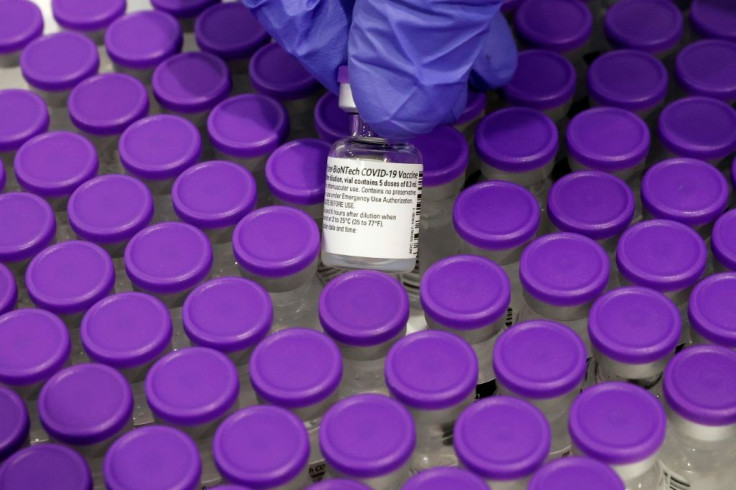What’s The Holdup? Many COVID Vaccines Still Unused, CDC Says
KEY POINTS
- The government is far short of its vaccination goals
- FDA advises against altering dose protocols
- Dr. Anthony Fauci cites logical issues for the delays
Vaccination against COVID-19 in the United States is going far slower than expected and health officials are warning against altering the dose regiment in an effort to move faster.
The U.S. Centers for Disease Control and Prevention announced that roughly a third of the 15 million vaccines against COVID-19 have been used so far. Already, the government fell well short of its goal of getting the first shots in the arms of some 20 million people by the end of December.
The extreme cold necessary to store the vaccines complicates distribution. Elsewhere, the lack of federal support has been cited as a problem in getting vaccines distributed. Both of the vaccines approved for use in the United States are mRNA vaccines, which rely on a type of genetic code to prompt the body to make a protein that would trigger an immune response. That method is new (meaning it was developed over the last couple of decades), which may lead to distrust in vaccine safety.
Dr. Anthony Fauci, the top infectious disease expert in the United States, told MSNBC much of the delay was due to logistical issues.
“We’re not where we want to be. No doubt about that,” he said. “I don’t think we can blame it all on vaccine hesitancy.”
The federal government has said inoculation campaigns were something for state and local leaders to organize, though critics say that plan leaves overwhelmed staff and regulatory officials shouldering too much of the burden.
Last week, New York City Mayor Bill de Blasio said he was planning for a mass vaccination campaign using schools, community centers and other facilities as temporary clinics.
“It’s going to take a lot of work,” he said. “It’s going to take tremendous urgency and focus and we will need help from the federal government.”
On Monday, New York Gov. Andrew Cuomo said he was taking the state to a new phase in the inoculation effort by opening vaccine distribution up to health care workers and other staff that may provide in-person care to patients. Part of the effort includes penalties of up to $100,000 to providers that don’t use up their vaccine inventory by the end of the week.
“Getting this vaccine out is going to be the single greatest operation government has ever had to accomplish and we're taking bold actions to ensure it is delivered swiftly and equitably for all New Yorkers,” the governor said.
The FDA, the authority tasked with authorizing vaccines for public use, said it was advising health officials to stick closely to the two-dose regime on the Moderna and Pfizer-BioNTech vaccines despite the slow rollout.
“We know that some of these discussions about changing the dosing schedule or dose are based on a belief that changing the dose or dosing schedule can help get more vaccine to the public faster,” a statement from Monday read. “However, making such changes that are not supported by adequate scientific evidence may ultimately be counterproductive to public health.”
The FDA said data show the reported efficacy rates of both vaccines hold only if the correct dose interval is followed. For Pfizer-BioNtech, the second shot needs to come 21 days after the first. For Moderna, the interval is 28 days.

© Copyright IBTimes 2024. All rights reserved.





















